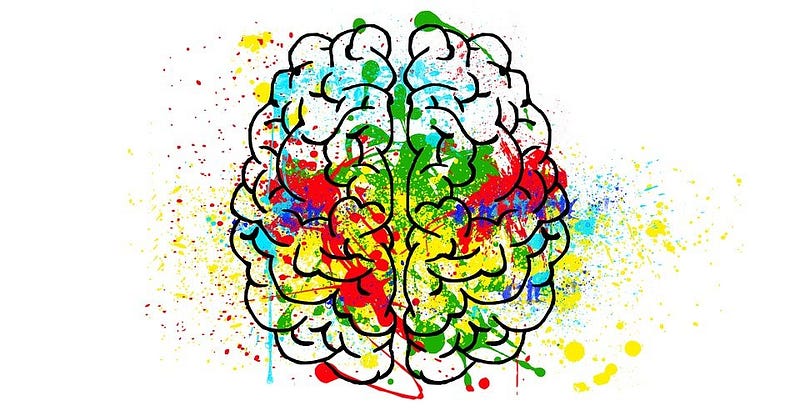Exploring the Connection Between Brain Networks and Creativity
Written on
Chapter 1: Understanding Creativity in the Brain
Recent studies utilizing brain imaging techniques have explored the significance of semantic memory networks in tasks requiring creativity.

Creativity transcends specific forms of expression; it embodies the ability to generate and articulate unique ideas across various mediums. This includes the skill to reassemble existing concepts into innovative configurations. While this definition may not capture the entirety of creativity, it serves as a foundation for understanding its neurological underpinnings.
A historical perspective introduces the associative theory of creative thought, proposed in the 1960s. This theory posits that a crucial element of creativity lies in our capacity to connect distinct, often unrelated ideas stored in our semantic memory, which encompasses our general knowledge and understanding of the world. Remarkably, semantic memory tends to remain robust as we age, suggesting that, if the associative theory holds true, creativity may not necessarily diminish with age—potentially flourishing instead if one maintains curiosity and continues to learn.
Advancements in brain imaging, specifically functional magnetic resonance imaging (fMRI), have recently enabled a deeper investigation into the brain's role in creativity. fMRI detects blood flow changes in the brain, which are indicative of neuronal activity; increased blood flow generally reflects heightened activity in specific areas.
A noteworthy study employed fMRI to assess brain activity during creative tasks among 93 participants (average age of 25, with 44 women). Participants engaged in a semantic relatedness judgment task where they evaluated 35 word pairs, scoring the perceived relatedness from 0 to 100. The focus, however, was not solely on the scores, but rather on the brain's activity—specifically, the extent to which participants' brains made connections between words.
Quantifying this process is complex, leading researchers to analyze the brain's semantic networks (SemNets) that activated during the task. They measured various characteristics of these networks, such as average shortest path length, modularity, and clustering coefficients. Participants’ overall creativity was assessed using the Inventory of Creative Activities and Achievements (ICAA).
In their findings, which accounted for factors like age, sex, education, and IQ, the researchers discovered that individuals with higher creativity exhibited less modular SemNets. In simpler terms, the brain networks activated during conceptual thinking in highly creative people tend to be more interconnected, rather than distinctly separate.
The study's authors note:
> These results provide an unprecedented insight into the relationship between brain activity and semantic memory networks in real-world creative behaviors.
They also recognize some limitations, including the relatively small sample size and the fact that the RTJ task is merely one approach to assessing associative thinking. Additionally, creativity encompasses more than just word associations; factors such as personality, mood, and motivation significantly influence creative expression.
Overall, even from a neurological perspective, it appears that true creativity involves thinking beyond conventional boundaries.
Chapter 2: The Neuroscience of Creativity
The following video delves into the intricate relationship between neuroscience and creativity, exploring how our brains foster inventive thinking.
The Neuroscience of Creativity - YouTube
This video provides insights into the mechanisms of creativity within the brain, highlighting key findings from recent research.
Chapter 3: Creativity's Key Brain Networks
In this segment, we examine the three primary brain networks involved in creativity: convergent, divergent, and lateral thinking.
Creativity's 3 Main Brain Networks - YouTube
This video elaborates on how these brain networks function and their roles in various creative processes.